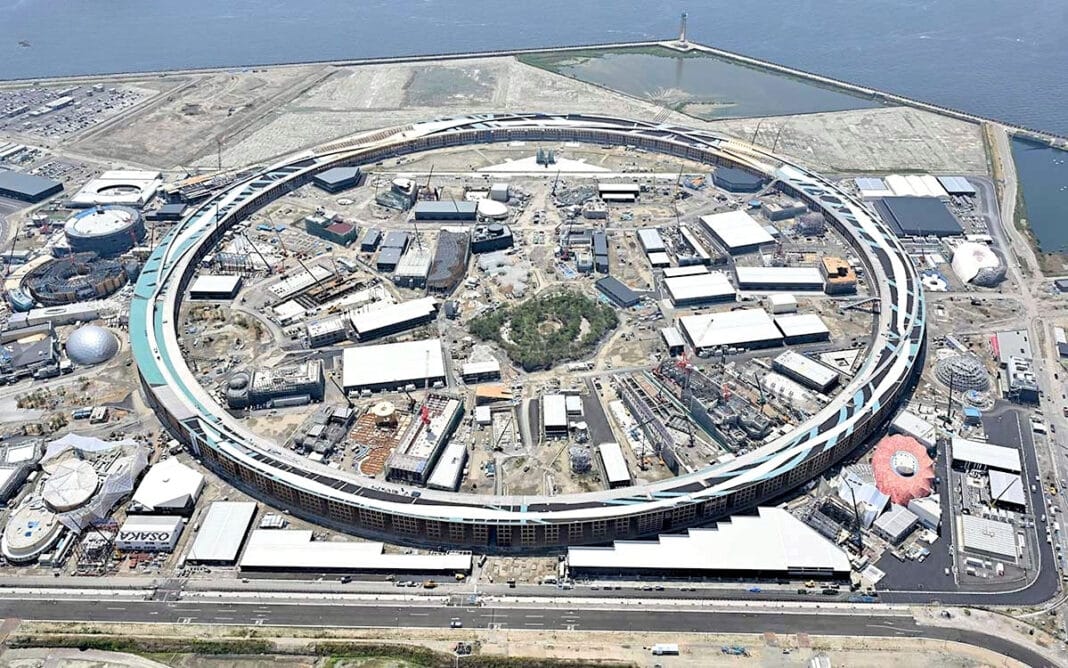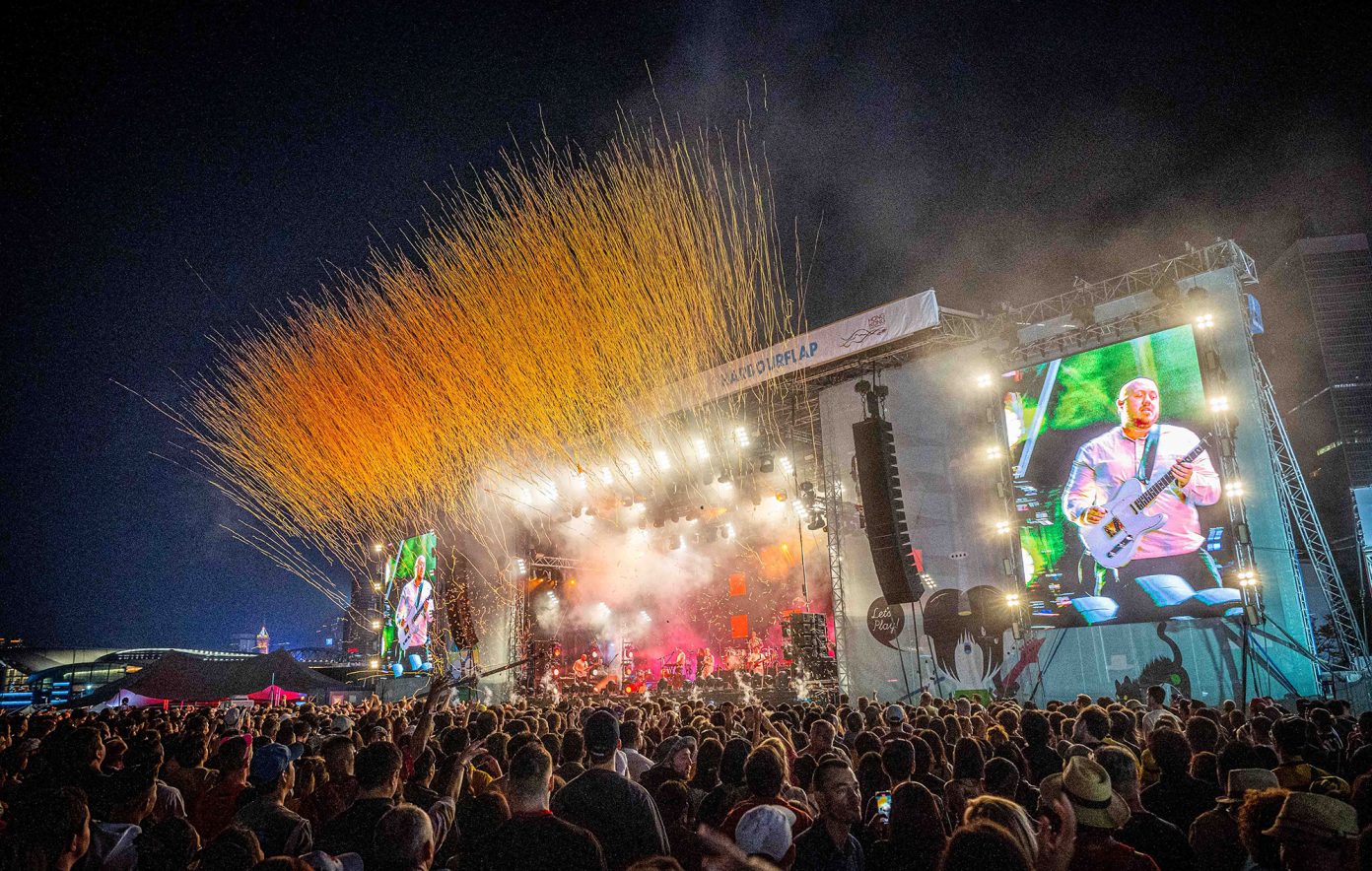“Everybody now is trying to get on the green ‘fast train,’” said Professor Albert Speer, Founder of AS&P, one of the world’s foremost urban planning firms, at a recent conference in Shanghai. “But not everything that is ‘green’, really is.”
The sustainable environment debate continues to divide public opinion, with scores of new technologies, designs and company strategies claiming to contribute to a cleaner, healthier planet. But, as Speer’s comments highlight, dividing the ecological benefits from the marketing hype is often trickier than it may seem. Sustainability is a critical political, economic and social issue worldwide that is as relevant to the meetings and conventions industry as to any other business sector – but green actions and words must be effective, consistent and measurable.
The current economic situation means the pressures on meetings planners and events venues to reduce their carbon footprint are two-fold: to contribute to a globalised drive for greater environmental responsibility, and to cut energy wastage and slash costs. In addition, clients are increasingly seeking to showcase their eco-friendly credentials and social responsibility messages through their own meetings and events.

“Many conferences have an interest in their carbon footprint now, [and] since people feel very small and insignificant relative to issues like global warming, they are often looking for speakers to explain how they can make a difference, why what they do actually does matter,” says Dennis Church of Eco Speakers, a US-based organisation that provides specialist speakers on sustainability issues for conferences and seminars worldwide.
Church adds that, “Of course, venues want to know more about the relationships between sustainability and the economic meltdown – how can becoming more sustainable help us cope with extreme economic distress, and how can we find the resources to address green issues in view of the extreme economic distress.”
According to research by the Green Meetings Industry Council, the “average meeting produces 9.1 kilogrammes of waste per person per day.” In other words, the industry needs to clean up. To help push the drive toward more sustainable events, the GMIC is launching – on 22 April, World Earth Day – the Million Tons of Trash Challenge. Running until the end of 2009, it challenges meetings, festivals, and other live events organisers worldwide “to measure and reduce the carbon they emit, the waste they produce, and the water they consume.”
Organisations with the best recycling and waste diversion rates will be recognised by the GMIC, and the results of the challenge will be published as an industry best practices guide. “The intention is to build awareness in our industry about the magnitude of waste generated, and that the cost of disposing of all that trash effects our bottom line,” says Amy Spatrisano, GMIC President.

Among the Million Tons of Trash Challenge’s global supporters is Oracle, which intends to transform its Oracle OpenWorld, the world's largest conference for business software, into “a completely sustainable event.” In 2009, Oracle aims to “reduce or divert 100 tonnes of waste, up from the 67 tonnes of waste diverted in 2008,” according to a company statement.
Green issues are increasingly becoming a key factor for events managers and venues in Asia Pacific. The Thailand Convention & Exhibition Bureau, for example, has launched a Green Meetings campaign that sets new environmental practice standards for MICE operators. As well as enhancing best practices, the initiative is seen as a way to enhance the international appeal of Thailand as a major events destination.
“Apart from protecting the environment, the Green Meetings project is a major selling point for MICE business in the future because the international MICE industry is concerned with the environment when it comes to selecting a host country for their events,” said Natwut Amornvivat, President of Thailand Convention and Exhibition Bureau.
Confronted by the new green agenda, conventions bureaus, events venues and meetings managers are dealing with a shared challenge – how to monitor and evaluate their commitment to a cleaner planet. Put simply, what is the cost of sustainability – and how do you demonstrate ‘sustainable value’?
One method being increasingly used is carbon offsetting, whereby an event manager calculates the polluting potential of a comprehensive checklist of items pertaining to an event – such as the paper used for invitations, conference kits and badges, transportation of materials, guests and staff members to and from a venue, and heating, lighting and air conditioning. Once the full ‘polluting cost’ of the event is calculated, the emissions are ‘offset’ either by buying carbon credits or by investing in tree-planting programmes where the total carbon dioxide emissions that can be absorbed by newly planted trees must at least equal the total emissions of the event itself.
“A carbon-neutral event has an overall ‘zero impact’ on the environment, in terms of carbon dioxide,” says Stefano Ritella, managing director of Shanghai-based HLD Events, which recently managed a carbon-neutral banquet for 150 people onboard a yacht on the Huangpu River. “The structure is similar to any other event. What changes are the details that go into the planning and the attention the event management company has to pay to them.”
Planning a carbon neutral event follows a meticulous mantra: “Plan to reduce as much energy cost and wastage as you can first, and then offset the rest.” During the initial assessment process, some high-polluting costs will immediately stand out. “You need to calculate the total tonnage of all the emissions generated by individual participants, including the event management company. In terms of transportation required to attend the event, air flights are obviously the worst. You also need to look at average food consumption,” says Ritella. “If done properly and with reliable partners, offsetting an event could cost as little as two per cent of the total budget.”
Before choosing US-based CarbonFund for the Huangpu River banquet’s carbon offset programme, Ritella checked out the credentials of five different companies to ensure they complied with the client’s strict requirements. CarbonFund’s donors have supported large reforestation programmes from Nicaragua and Brazil to Yunnan Province in China. Some offset programmes also enable clients not just to plant trees to trade off the event’s CO2 emissions, but also to name parts of a forest after the company – which adds extra corporate social responsibility PR opportunities.
Another company that chose the carbon offset route is St Kilda, Australia-based Red Scooter Events, operator of Australia’s first carbon neutral events venue. “We made a decision to care for the environment, as well as our clientele, and that gave us a genuine point of difference,” says Eammon Hamilton, Managing Director of Red Scooter Events. “Apart from naturally caring for the environment, reducing in-house energy usage and saving money, we also saw a huge marketing opportunity.”
Red Scooter’s carbon neutrality is verified by Greenfleet, and is a result of planting more than 2,000 native trees between 2005 and 2007 in Wedderburn, Victoria. In 2008, Hamilton says Red Scooter went “one step further” by planting an additional 3,000 trees and working with local communities to increase awareness of environmental challenges. The subsequent offset calculations enabled Red Scooter to upgrade to being a “carbon positive” venue.
The company implements a range of environmental protection measures – ranging from installing water-saving equipment to trapping grease and organics and using environmentally friendly cleaning products to reduce the amount of phosphorous in the sewers to “enthusiastically recycling oil, cardboard, corks, glass and plastic.” The company reinvests some of the money it saves from energy conservation to purchase electricity from GreenPower, which is sourced from renewable energies like solar and wind power.
Green credentials also infuse Red Scooter’s marketing strategy. “We have always printed all of our marketing materials on 100-per cent recycled stock,” Hamilton says. “In 2009, our collaterals were printed on recycled sugar cane, using waterless presses and soy inks.”
Providing a carbon neutral – and, now, a carbon positive – events venue has been good for business. “Some companies will only deal with organisations that have green credentials,” Hamilton says. “Individuals have also been attracted as a result of being carbon neutral. We have lots of weddings where the couple is really interested in environmental issues, and other events that incorporate vegan menus, which reduce our food miles.”
Sustainability is also an increasingly debated subject in the hotel industry – with both city and resort hotels coming under close scrutiny to reduce their carbon footprint. For the large hotel chains, the green agenda is now a definitive work in progress, and one on which they are expending considerable time and resources.
“We have kicked off a global Environmental Sustainability initiative, and have a Chief Environmental Officer on board to both coordinate our existing programmes and assess where the opportunities lie in future,” says Chris Scheidt, Vice President for Brand Compliance and Franchise Management, Starwood Hotels.
Starwood’s environmental policy charter covers five areas: conserving energy and water, effective waste management, improving indoor environmental quality, reporting and performance indicators and raising environmental awareness with staff, guests and local communities. “We have identified a whole slew of potential new sustainable programmes, and each division is working through these to see which will be viable,” says Scheidt.
Starwood is also working on ‘sustainable calculators’ that enable the hotel group to fully compute its total carbon footprint in each area of operations, and has a carbon offset programme in place in the United States that will be rolled out and adapted to regions worldwide. This year, it has also set a five per cent target for water usage reduction in its hotels.
Among its signature sustainable programmes in Asia Pacific is the Sheraton Jiuzhaigou Resort. Surrounded by pristine natural scenery near the White River Golden Monkey National Reserve in Sichuan Province, China, the resort is situated on the North Sichuan Plateau, 1,800 meters above sea level. Because of its location, the chilled underground mountain water is being used for the air conditioning system and to chill the building during the summer instead of a centrifugal air-conditioning system. This water-based system will enable the hotel to reduce annual electricity consumption for air-conditioning by around 60 per cent.
Also going green is Alila Hotels and Resorts, which has teamed up with the GreenAsia Group to move its operations towards being carbon-neutral. GreenAsia Group will scrutinise the total greenhouse gas emissions at Alila resorts and its headquarters in Singapore, which it plans to offset by supporting emissions reduction projects in Asia. Alila’s forthcoming Hadahaa Villas project is, the company claims, the first in the Maldives to commit to the environmental standards of the Green Globe certification at every stage of its design, construction and operations.
"Minimising our impact on the environment have long been priorities for Alila, governed by our “Environs” philosophy that views conservation, community and commerce as inseparable,” says Frederic Simon Managing Director & COO of Alila Hotels. “We continually seek to improve our ecological performance at all of our properties.”
Melbourne’s 6-Star Green Centre
The new Melbourne Convention & Exhibition Centre (MCEC), which opens in July, is the world’s first ‘6 Star Green Star’ convention centre. The environmental rating is based on a mix of initiatives that reduce overall energy usage and promote recycling instead of a reliance on non-renewable resources.
The ultimate aim is to make the lowest possible impact on the environment. “The MCEC has set an environmental benchmark for the industry, becoming the only convention and exhibition venue in Australia with both Green Globe and Waste Wise accreditation,” says Frank Mohren, MCEC’s Director of Operations. “Our target is to reduce energy usage by at least 15 per cent.”
Melbourne’s new convention centre features the first privately funded black water treatment plant in a public building in Australia. The treatment plant receives ‘black’ water from the building’s sewer systems and rainwater collected from the roof. After being treated, the water can be used for toilet flushing, cooling towers and watering the parks and gardens. “The system gives the MCEC a 20 per cent reduction of water saving inside the centre, and a 100 per cent saving outside the building,” says Mohren.
Inside the centre, radiant slab heating will provide energy-efficient thermal comfort and reduce air conditioning requirements, and solar panels will provide hot water for all public amenities. Trained MCEC staff will also advise clients on ‘green’ options – including waste management, green power and sustainable food menu options – to reduce the environmental impact of their events.
These environmental credentials are expected to yield a commercial advantage over other venues “Early results suggest that although the economic environment is challenging, clients are keen to work with us and to protect the environment,” says Melissa MacCourt, MCEC’s Director of Sales. “We are seeing a positive impact in terms of enquiries and bookings for all types of events, particularly from organisations that share our goals in lowering the environmental impact of events.”
Small & Green: Naked Retreats
Smaller events venues can also play their part in helping raise sustainability standards. Located in the picturesque bamboo-clad hills of Moganshan, near Hangzhou, capital of eastern China’s Zhejiang province, Naked Retreats aims to be a model of best environmental practice. Developed by South African Grant Horsfield, Naked Retreats opened in 2008, and is a rural mountainside hamlet comprised of eight stone cottages renovated in contemporary style.
The retreat, which features state-of-the-art bespoke solar water-heating technology, fresh tap water culled from a natural spring, a grey water recycling system, and solar-powered street and exterior building lighting, has been used by multinational companies and SMEs for CEO away-weekends and top-level management meetings.
Corporate groups also utilise its British Military Fitness boot camp – which promises “a full weekend of ruthless exercise and training, including mountain climbing, mountain biking and military drills” – for team-building breaks. Other activities on offer include tea picking, fishing, hiking and yoga.
In March, Naked Retreats teamed up with environmental consulting company Greennovate to manage a Big Litter Pick, which saw 160 students, families and company members collect over 100 large bags of rubbish around the local villages The goal, says Gabriela Lo, Marketing Director of Naked Retreats, was “to raise awareness, clean up the mountain and raise funds for a local education programme in Moganshan.”
Going Greener: Six Tips For Event Planners
– Commission an environmental audit of your own office and sustainable practices to reduce your carbon footprint.
– Do your ‘green’ research and be inventive. Many clients are seeking to improve their own eco practices but need events planners to provide unique ideas and solutions.
– Cut paper usage wherever possible by using e-contracts and online correspondence tools. When paper is needed, use recycled paper and natural inks.
– Get accustomed to always turning off lights when leaving a room, reducing reliance on air-conditioning and more efficiently managing electricity and water usage.
– Assess a handful of different carbon offset programme providers for each new event to ensure the solution meets your client’s objectives.
– Use organic products or hand-carved items made from sustainably grown wood for conference gifts, rather than company-branded.


